
- For 2-12 players
- Game of strategy
- Ages 7 and up

- For 4-10 Players
- 30 minute playing time
- Ages 8 and up
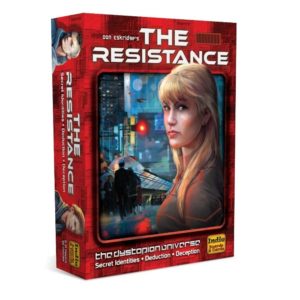
- For 5-10 Players
- 30 minute playing time
- Ages 13 and up
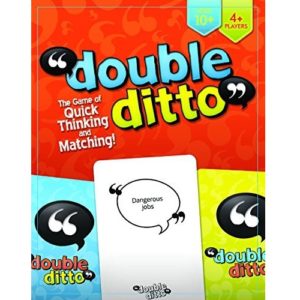
- For 4+ Players
- 25 minute playing time
- Ages 10 and up
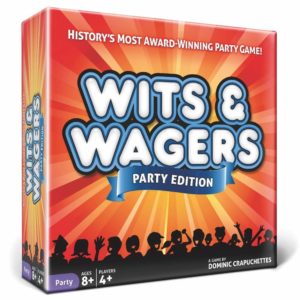
- For 4+ Players
- 105 question cards
- Ages 8 and up
Choose the Best Board Game for 10 Players
Customer’s Choice: the Best Rated Board Games for 10 Players
22 users answered this survey. Please help us improve this review!
Board games are a great way to bring the family together and enjoy each other’s company. The best board game for two players is different from what you want if you have 10 people playing.
The important thing with large group board games is to make sure everyone will be able to see well enough over the table. That means giving them room for their own play area without having it intrude on others’ space at all while also making sure nobody needs to strain or stretch in order to get a clear view over the table.
Board games are also a great option because they can be played just about anywhere at any time. And many times it’s more fun when you restrict yourself from using technology since these board games are meant before screens so aren’t focused on things like points and high scores.
Board games are a great way to spend time with your family or friends. They can be competitive and fun, or they can be collaborative and cooperative. Board games for 10 players offer an opportunity for everyone in the room to have a turn playing – so you don’t have to wait around too long! This guide is all about board games that work well for 10 people.
Table of Contents
Original SEQUENCE Game – the Editor’s choice!
 The Original SEQUENCE game allows you to be creative and inventive, while still requiring skill. The excitement of the board changes the more players that play, and different strategies are needed to stay in the lead. This unique game is simple enough for children or adults (especially those who like a challenge).
The Original SEQUENCE game allows you to be creative and inventive, while still requiring skill. The excitement of the board changes the more players that play, and different strategies are needed to stay in the lead. This unique game is simple enough for children or adults (especially those who like a challenge).
It builds STEM skills through strategy-focused gameplay and offers a substitution place for typical games played around this age group, which can sometimes take too much time away from other important aspects of childhood development – such as being physically active!
It’s never too early to start teaching your little ones how to be strategic thinkers. This smart game improves cognitive skills, and sparks the love of learning in children as they work to land 5 cards in a row before their opponents do!
Pros
- Easy to learn;
- Can be great for a family game night;
- Good for developing STEM skills;
- Designed for 2-12 players, age 7+;
Cons
- Small parts can be dangerous;
- Not a metal version;
- Low quality cards;
With the Original Sequence Game, every card is always available and players take turns choosing what combinations they will play while making sure to cover their own opponent’s potential moves.
Spontuneous The Song Game – the best for karaoke nights!
 Spontuneous is an adult board game that’s best played with larger groups of four to ten people. With no setup time and no preparation needed, you’ll get the fun things going in just minutes! The goal is to listen carefully throughout the song and match as many words as possible while completing full sentences until all songs are completed.
Spontuneous is an adult board game that’s best played with larger groups of four to ten people. With no setup time and no preparation needed, you’ll get the fun things going in just minutes! The goal is to listen carefully throughout the song and match as many words as possible while completing full sentences until all songs are completed.
The objective of this game is for one player to say a term and try to outdo the other players in terms of obscure songs about that term. If the Trigger-Word was “dawn”, for example, the first player to begin singing a 5-word portion of lyrics from any song containing the word “dawn” would score! The winner is the first player to start singing, but he/she must sing at least 5 words that include the word “dawn”.
Pros
- Good for lively parts;
- Keeps everyone involved and laughing;
- Highly competitive;
- Fast-paced gameplay;
Cons
- Not for shy types;
- The game sessions can be too long;
Spontuneous will leave your heart racing and your belly hurting from all the laughing that ensues as players race to guess each other’s song requests before the time runs out. It can be a perfect game for parties.
The Resistance Game – the best among deduction games!
 The Resistance is an immersive social deduction game of strategy and creativity for five to ten players, where the battle between free will and destiny is fought. Forget your abilities, you will need all the cunning, built on eternal fear of doubt and mistrust that you can muster in order to outwit allies or unsuspecting foes.
The Resistance is an immersive social deduction game of strategy and creativity for five to ten players, where the battle between free will and destiny is fought. Forget your abilities, you will need all the cunning, built on eternal fear of doubt and mistrust that you can muster in order to outwit allies or unsuspecting foes.
The Resistance Game pits its players against each other in the fight for World Domination by telling convincing lies about their identities and working as a team to outwit the other parties. The game is fast, creative, and hilarious.
The rules are part bluffing, part logic-puzzle that encourages unfair tactics such as ever so subtly glancing at cards in your hand while claiming not to have looked at them or craftily altering a card’s value based on how you played it. Typically, 10 people will play with most games lasting 30 minutes.
Pros
- A nice deduction game;
- The game is intriguing;
- 30-minute game sessions;
- Many expansions;
Cons
- Not for little kids;
- It doesn’t include all the cards to play the game;
- Some kids may find it boring;
The Resistance is an intense game that will have you on the edge of your seat. There’s no need for alliances or trust, only lying and catching liars. That means it doesn’t matter if you’re friends with someone because they might lie to you too.
Double Ditto Party Board Game – the best for easy rules!
 Double Ditto is a fun, creative game that will have people laughing or crying as they discover matches with other players. For ages 6 and up, this party board game prompts creativity to really show in matched answers.
Double Ditto is a fun, creative game that will have people laughing or crying as they discover matches with other players. For ages 6 and up, this party board game prompts creativity to really show in matched answers.This fast-paced 25-minute game requires no reading, writing, math, or counting skills required – kids and adults alike can start playing right away.
Practical and strategic, the game ensures everyone has multiple wild guesses that often lead into excited laughter.
Pros
- Easy to learn the rules;
- Fast-paced gameplay;
- Great for any party or family gathering;
- Funny;
Cons
- This game can be boring for elderly people;
- Outdated themes;
A hilariously creative, fast-paced party game that’s stimulating for both kids and adults. Whether it’s a family night gathering to keep your relatives entertained or the holidays when you need something new for people of all ages to enjoy, Double Ditto Party Board Game is always a perfect substitute.
North Star Games Wits & Wagers Board Game – the best among party trivia games!
 Are you looking for a game that will entertain your guests to the max? The Wits and Wagers party edition is for you! It comes with a ton of new questions, so you’ll never run out. The easy-to-understand manual makes it perfect for people who are just learning or who have always wanted to take on the responsibility of being a trivia master.
Are you looking for a game that will entertain your guests to the max? The Wits and Wagers party edition is for you! It comes with a ton of new questions, so you’ll never run out. The easy-to-understand manual makes it perfect for people who are just learning or who have always wanted to take on the responsibility of being a trivia master.With 4 players and no limits, this fun board game is sure to get all night long!
You can use this party edition to play with up to an unlimited amount of players, making it perfect for larger gatherings. Whether you fill your “group” with your family and friends or gather as many people as possible, the Wits & Wagers Party Edition is guaranteed fun.
Pros
- Designed for 4-10 players;
- Special party edition;
- Easy to play;
- Good for kids and adults;
- New questions can be added by the players;
Cons
- Small parts can be dangerous to little kids;
- More a gambling activity than a trivia game;
- Not many humorous questions;
Wits & Wagers: Party Edition is the perfect board game for gamers and non-gamers alike. It’s informative, challenging, entertaining, and exciting! This new edition includes 300 questions that will change the way you think about trivia again.
The Buyer’s Guide
What board games are good for large groups?
Board games are a great way to bring large groups of people together. They’re often both fun and immersive, and can be played in large or small bursts depending on the length of your party.
Many board games are designed for two players but larger group sizes find ways to accommodate more people by playing multiple smaller games or using expansions that add more cards, tiles, etc. This means that you usually won’t have to worry about finding extra copies of the game itself if you want to play with an odd number of friends. It’s always good to have a few different options at parties though just in case some will play one thing and others prefer something else!
Board games can also be great for large groups because you don’t need to wait to take your turn. If five people want to play a game that takes one hour, it’s going to be hard for them all to join in at the same time, but with board games there will rarely be conflicts over turns and you’ll probably all get a chance to play even if some of you can only spare fifteen minutes or so.
Board games are a great way to get large groups of people together at any time, not just for special occasions. Board game nights where everyone brings their favorite games can be loads of fun but they can also be too much work – organizing and dealing with all the different players and rules will take up your energy that you might otherwise use on party food or decorating!
Having one or two go-to board games that everyone knows how to play (like Scrabble) is a good idea, even if most of your parties will mostly consist of card games like poker.
Types of board games for large groups:
- Cooperative games
In these games everyone is working together against the game itself, so there’s no need for anyone to be eliminated and everyone can enjoy the fun of winning together. Some examples of cooperative games are Pandemic, Forbidden Island/Desert, Castle Panic and Flash Point.
- Competitive party games
These are for people who like to have a laugh with their friends but don’t always want the added stress of knowing that someone will end up feeling bad if they win. In competitive party games, you’re all playing on teams and often it won’t matter if one team wins overall, as long as your own team does. Some popular competitive party games are Tsuro, Pie Face, Cranium and Dixit.
- Strategy games
These games involve a bit more thinking and planning. They can be a lot of fun but they usually take longer to play, so again it’s good to know how long people have before the start of your party before you pick one. Some popular strategy games are Settlers of Catan, Ticket to Ride, Carcassonne and Splendor.
- Wargames
These games are not a great idea for large groups because they usually take longer to play than most people will have time for at a party. However, if you’re having an event which lasts all day and want to end it with a big game of something like Risk, then that’s fine! Strategy board games (which covers both strategy games and wargames) has some more information about this kind of game, just remember that your friends probably won’t all want to spend 3 hours playing on their own!
Board game tips for large groups:
- For 6 or more players. Unless otherwise specified, these games should require no expansions to play with six or more people (although some will become more difficult). For cooperative games, you’ll need an even number of players so that there aren’t conflicting turns. For competitive party games teams should ideally consist of three or more members each. For strategy games, you’ll usually need three or four players, depending on the game;
- Less than 10 players. It’s easiest for everyone if all the rules are printed somewhere visible and accessible to everyone playing, and all the components can be easily distributed between all the players so that nobody is left out of anything important. Make sure everyone understands the rules before starting! At larger gatherings it might be a good idea to have someone else organizing things like turn order and passing out components so you can devote more time to getting the party started;
- 10 or more players. You’ll need one copy of the game for every 2 players, plus a few extras in case some people don’t have a copy. If there are disagreements over rules or about what’s fair it might be good to have someone else around who can settle them fairly. As with larger groups, it can be helpful to have an extra person managing things like turn order and such so that you yourself aren’t too distracted from hosting the party;
The best way to play board games with large groups is to split your guests into several smaller groups. Not all of the group will have a turn each game but that’s okay, and it also means everyone will get more turns than if you split them into two-player teams!
How do you entertain a large crowd?
You need something fast-paced and fun that everyone will enjoy. Here are the top board games for large groups of players:
- Codenames. An easy-to-learn word association game where you have two teams competing against each other in order to win by uncovering all their agents first;
- Fluxx – rather than playing around a fixed objective or story like most board games, the winner here depends on what cards come up next. The rules keep changing as time goes on so it keeps things exciting;
- Sushi Go! – while not strictly speaking a “board” game since no boards are involved, this set of card-based mini-games is an excellent choice when you have a large number of people. Each round, players must collect different types of sushi in order to get the most points;
- The Resistance – this game revolves around trying to figure out who among your group are spies and sabotaging them with mind-games before they sabotage you first! It’s easy enough for beginners but also provides some interesting strategies along the way as well;
- Ticket To Ride – one of my personal favorites, this board game involves building railways on a map so that you can deliver goods from point A to B more efficiently than anyone else and thus win by collecting more points than everyone else combined at the end of the game. The rules are easy to learn and the game can scale up nicely depending on how many people you have;
- Settlers of Catan – very similar in concept to Ticket To Ride, this is a board game where players compete for resources in order to win by collecting more points than their opponents at the end of the game;
- Carcassonne – another tile-laying game based around building cities, roads, and farms, this is one with simple rules but that provides great depth for those who want to think more carefully about their tactics;
- Pandemic – a cooperative game where players must work together in order to save the world from diseases! This one scales well up and down depending on how many people you have;
How should you play large board games?
You need two things: patience and communication with your fellow players. Patience because it takes time for everyone to learn the rules of each new game so they can all begin playing at once, and communication since most modern-day board games revolve around trying to outwit your opponents rather than just rolling dice or whatever else as was often done in older days when such games first began appearing.
You should also bear in mind that some strategies are more useful than others when playing these types of games and that some are more suited to certain types of board games than others are.
For example, when playing Risk or Catan typically the most important thing is to get your armies out early on so you can take as many territories as possible while fighting off competitors at the same time.
When playing Ticket To Ride though it’s better simply to focus on getting points from delivering goods between cities rather than trying too hard to expand across a map like in other such games since this doesn’t help you win nearly as quickly or easily.
Settlers Of Catan meanwhile works best with groups where there’s just one leader who does all the decision-making for everyone else (including how much resources each person gets) so they can all work together more effectively.
Every board game is different! It’s important to adapt your strategies and play style accordingly, so try a few games with friends before playing for real money online or at bigger events like conventions since it can be quite difficult otherwise.
You don’t want someone bringing their Catan strategy into an event only to find that the rules of this particular version require you to get certain resources yourself rather than relying on others to provide them too much.
FAQ
Is Sequence a good game?
Sequence has a simple ruleset, so it’s easy to teach your friends and family how to play it. However, even though you can pick up the rules in just a minute or two, there is actually a lot going on in this game – it is not as simple as it looks! After each round you will find yourself planning or desperately coming up with last minute tactics (especially when you start drawing those blocking cards).
The more you play Sequence, the more strategic depth you will uncover. Sequence is a great game because it is very replayable and keeps players on their toes from start to finish.
Sequence does not only have that one “hook” that grabs the player, but it offers different alternate paths that can lead to victory. It has a 3-lane system where each lane represents a different strategy. You can focus on getting out the most number of tokens in this lane or you could try to build up your end-game points by focusing on high value sequence cards.
The third lane relies more on blocking another player from doing what they want by using stun cards early in the game when players are still building up their deck. In addition to those three lanes, there is also the option of playing cards in front of you as blockers so other players cannot use them or sending two cards back to your deck that could help you draw a needed card later on.
What does the Joker card do in Sequence?
The Joker card in the sequence board game is one of the wild cards. If an opponent lands on a square that has the same color as a player’s piece, then he or she must move back to the starting position. When a player lands on a Joker, it can be played on any other color, so they are forced to move forward instead.
Why are there two decks in Sequence?
The game with two decks is a special edition of Sequence. There are 6 different deck-arrangements in this game, and there are also some cards that have only one copy instead of 2 or 4. The game has been carefully put together for those who love both the traditional Sequence and challenging new arrangements!
How do you play the game Spontuneous?
Spontuneous is a board game for 2 or more players. One person takes one card from each pile. Piles are then placed face down on either side of a playing area. Players take turns picking two cards at random, choosing whichever ones they want (from both piles) and placing them back down where they were. If double cards appear then play moves onto the next person who would have theirs normally. If triple cards appear then play goes around again until one of the players picks a new card that isn’t a triple.
The game is played with two sing-off piles (players just lift up two cards at random from each pile and say their chosen song) but this can be changed to make it an elimination game by having three sing-off piles, or even four, if you want to make it more challenging.
Players who correctly guess the song title take one of the cards for themselves as their point. If they are incorrect then their opponents keep both cards for points at the end of the round. The first player/team to gain ten points wins! This is not always easy because either team may have been lucky enough to pick up obscure songs that few people know.
What is the Spontuneous challenge?
The object of the game is to be the first team or player to reach ‘fin’ by correctly singing the words in song titles shown on a given card. The winner is determined by how quickly you can sing out the correct song title and say it correctly before your opponents.
How to play with Ditto?
Ditto is a game in which players try to match two cards, one on their side of the screen and one on their opponent’s. When both sides have matched cards, those cards are removed from play and new cards drop down to take their place. The first player to remove all of his or her cards wins.
Is Wits and Wagers a good game?
Yes, Wits and Wagers is a good game. The players that know trivia are excited when they win by betting correctly on an answer they knew, while those that don’t know trivia still enjoy themselves even though their odds of winning are not as great. There is also a considerable amount of strategy involved in maximizing your score, which makes the game even more fun. The average playtime is around 30 minutes but if you want to make it shorter or longer you definitely can.
How do you play Wits & Wagers?
Wits & Wagers is a trivia game in which you may wager on the outcome of any player’s answer. So, whether you’re a pro at guessing educated hunches, playing the odds, or understanding your pals’ interests, you can win. It takes 2 minutes to learn and 25 minutes to play; it accommodates up to 20 players in teams.
In Wits & Wagers, each player makes a guess to a question and places it face-up on the betting mat. Do you believe you know the answer? You may bet on your prediction. Think you know who the recognized experts are? Bet on their opinion instead of yours. According to the odds on the betting board, the closest response wins. You’ll be cheering like you’ve just won the lottery.
How many versions of Wits & Wagers are there?
There are three different types of editions: basic/classic/standard (yellow box), party edition, and family-friendly version.
Playing tabletop games with friends is one of the best ways to spend time, especially when it comes to the party with many people involved. It is fun, interesting, exciting, allows introduce strangers to your old friends, which is especially important if you are going to a diverse or new party of people with different interests. In this review, I will share my thought about picking interesting board games for 10 players or more.
Choice of the board games for 10 players
It is important to say that despite the fact the game’s box may specify the number of players of 2-10, it can be fun only for a few people and not the whole group. It all depends on the picked game, so when you have chosen the title for the right number of participants, read its description and try on mentally what it will be like to play it with different people that you may not even know yet.
If you pick a family-friendly game, pay attention to the products that do not have to drag and drop on the desired location and have simple rules that everyone knows: Monopoly, Jenga, etc.
The next thing to consider is the average playing time per gaming session. Tabletop games can last both 15 minutes and good 4 hours and this also needs to be taken into account, depending on what is more interesting to people – instant fun or slow development of the plot.
For active people or those who can easily resent other players, you should choose not the conflict games – instead, it’s better to focus on cooperative games. For those who easily separate the game from quarrels, you can choose more competitive games. For example, if your friend likes to chat, to make noise, to have fun – in this case, games should be more fun than intellectual. For such people, it is better to pick the title that involves active interaction between players.
Top 5 board games for 10-player teams, according to Jenga-Game.Com:
- Sequence Game is a great pick for 2-12 players. It is a strategy game for the participants aged 7 years and more;
- Spontuneous is my absolute favorite pick for large teams of 4-10 players. It will do for parties of friends and family-friendly gaming nights;
- The Resistance is a 30-minute game for 5-10 teammates aged over 13 years;
- Double Ditto is a hilarious 25-minute game for large teams where the participants are over 10 years old;
- Wits & Wagers game is good for 4 players, with 105 question cards;
If you have the issues with The Resistance rules, check the video I’ve added to this review. It explains how to play. Make sure that everyone gets the rules of a new board game before playing. All participants deserve to have a fun time while playing. Do you have other party and family board games for large teams to offer? Share your recommendations in the comments below. Thanks for reading!
Video Tutorial: The Resistance – How to Play
Final thoughts
Board games are a great way to spend time with your family or friends. They can be competitive and fun, or they can be collaborative and cooperative. This guide is all about board games that work well for 10 players – so you don’t have to wait around too long!





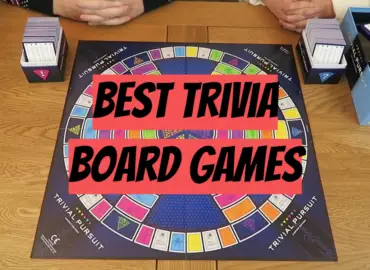
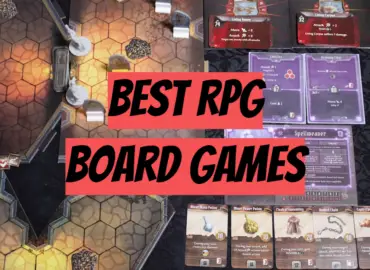
10 player games are pretty hard to find. It’s not exactly the easier array of games to find; however, I think you did an incredible job at putting this article together. It’s super useful and is very easy to navigate. Overall, I love the look and feel of the site and can’t wait to purchase some of these games!